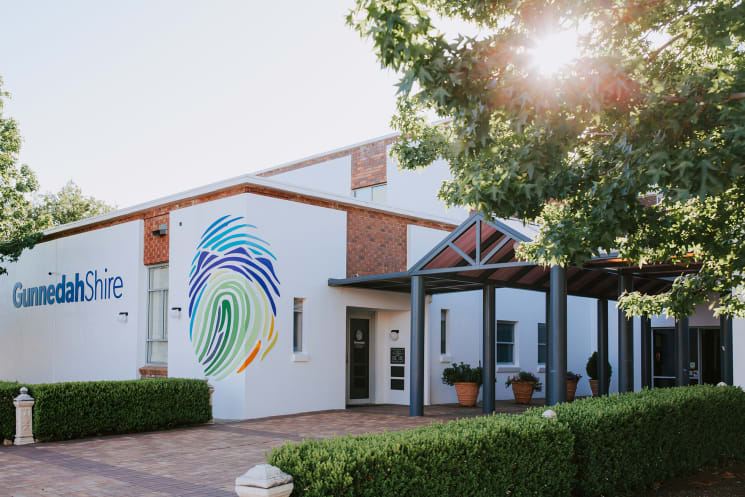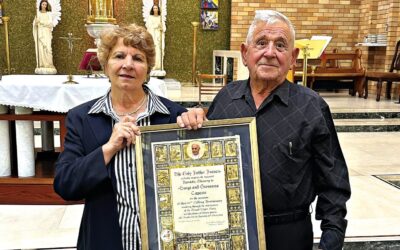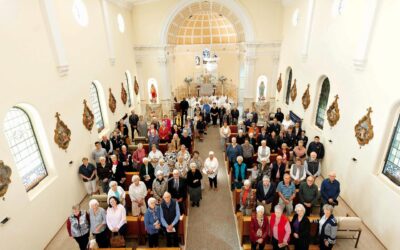Gunnedah Times journalist Jen Mitchell asked the Times’ followers on Facebook what questions they have regarding the proposed Special Rate Variation. More than 30 questions were asked. To provide responses, the Gunnedah Times used information already provided by council or asked for direct comments from council spokespeople. More questions will be answered in the upcoming weeks.
Other articles on the proposed SRV can be found here: Proposed 38.88 per cent rate rise for Gunnedah shire – Gunnedah Times
What would happen if no SRV was implemented? – Gunnedah Times
Q: How do Gunnedah shire rates compare to neighbouring local government areas – Narrabri, Liverpool Plains, Warrumbungle, Tamworth, Upper Hunter?
Information provided previously from Gunnedah Shire Council included information for Narrabri, Tamworth Regional, Inverell, Moree Plains and Muswellbrook shires.
Gunnedah:
The 2024/25 average rate for the residential category is $1106. The first year increase for this amount would be $264 ($5 per week). The second year increase would be a further $164 ($3 per week).
The 2024/25 average rate for the business category is $5899. The first year increase for this amount would be $1405 ($27 per week). The second year increase would be a further $877 ($16.87 per week).
The 2024/25 average rate for the farmland category is $5337. The first year increase for this amount would be $1271 ($24 per week). The second year increase would be a further $793 ($15 per week).
Narrabri:
The 2024/25 average rate for the residential category is $1143. The expected 2025-26 average rate is $1200. The expected 2026-27 average rate is $1260.
The 2024/25 average rate for the business category is $2921. The
expected 2025-26 average rate is $3067. The expected 2026-27 average rate is $3220.
The 2024/25 average rate for the farmland category is $4437. The expected 2025-26 average rate is $4659. The expected 2026-27 average rate is $4892.
Tamworth Regional:
The 2024/25 average rate for the residential category is $1387. The expected 2025-26 average rate is $1595. The expected 2026-27 average rate is $1675.
The 2024/25 average rate for the business category is $4942. The expected 2025-26 average rate is $5683. The expected 2026-27 average rate is $5967.
The 2024/25 average rate for the farmland category is $2530. The expected 2025-26 average rate is $2910. The expected 2026-27 average rate is $3055.
Inverell:
The 2024/25 average rate for the residential category is $1178. The expected 2025-26 average rate is $1237. The expected 2026-27 average rate is $1298.
The 2024/25 average rate for the business category is $5589. The expected 2025-26 average rate is $5869. The expected 2026-27 average rate is $6162.
The 2024/25 average rate for the farmland category is $3476. The expected 2025-26 average rate is $3650. The expected 2026-27 average rate is $3832.
Moree Plains:
The 2024/25 average rate for the residential category is $1252. The expected 2025-26 average rate is $1315. The expected 2026-27 average rate is $1380.
The 2024/25 average rate for the business category is $5620. The expected 2025-26 average rate is $5901. The expected 2026-27 average rate is $6196.
The 2024/25 average rate for the farmland category is $13,119. The expected 2025-26 average rate is $13,775. The expected 2026-27 average rate is $14,463.
Muswellbrook:
The 2024/25 average rate for the residential category is $961. The expected 2025-26 average rate is $1010. The expected 2026-27 average rate is $1060.
The 2024/25 average rate for the business category is $2499. The expected 2025-26 average rate is $2624. The expected 2026-27 average rate is $2755.
The 2024/25 average rate for the farmland category is $4820. The expected 2025-26 average rate is $5061. The expected 2026-27 average rate is $5314.
Q: Why are they introducing it now? Times are tough (even if you are a mining family) and this is the time that council should be supporting us, not making us pay more. Is it a coincidence that just as the council is looking at doing up four key open plan areas, they suggest this special rate variation?
Journalist: Does this have anything to do with the master plans?
Council: Not unless there are components that are already going to be done as part of normal maintenance, like sometimes you get an opportunity to do some work as a part of your normal maintenance. But no, it is a catch-up SRV, based on the differential between what the true cost of looking after these services has gone up by over the last, say 10 years for example, since the last SRV, compared to what the rate cap has been that’s allowed us to increase rates for those services. So, no is the short answer in relation to those specific master plans. Unless there is a natural alignment where council is able to use the resources to make some headway into that as part of the natural operations of business.
As to ‘why now?’, it has become critical. So, the analysis that has been done by the finance team is that it is now at a stage where we simply can’t afford to keep going without looking at a Special Rate Variation because we are running $3.1 million deficits. But the other issue is our cash is at a level where it will go negative, which we are not allowed to do under the Local Government Act. We are not allowed to borrow from our externally restricted reserves without approval from the minister, and then you have to afford repayments and interest in that, if we went down that path. So, it has really reached that critical stage where we simply need to bring this to the community.
There has been a bit of public comment … [where] there is a question of, ‘well, can’t council basically just wear this until things get easier’ and the reality is council is not an entity that exists separate to the community. For us to afford to provide services to the community, we need to have the funds to be able to do that. I think that people get a little bit confused and think, maybe like a company, wear the losses for a little bit and everything is okay. We only exist to serve the community and that’s what we’re trying to do with the rate increase or cutting costs if that is where we go.
Q: What is the rate rise paying for? Where does the extra money go?
Without the SRV, council would bring in extra income of $777,000 based on an assumed 5 per cent rate peg. These funds are split to cover award wages increases and contractual obligations with any residual allocated to asset classes and priority works where/if possible.
With the SRV, the 24 per cent increase in year one would bring in additional income of $3.82 million. Of which, $800,000 would go to general cost increases from award wage increases and contract obligations. Under the infrastructure renewal category, $2.1 million would go to transport (including sealed roads, unsealed roads, bridges and signage), $500,000 to open spaces, $400,000 to buildings and a yet-to -be-determined amount to stormwater.
The 12 per cent increase in the second year would bring in an additional income of $2.38 million. Of which, $900,000 would go to general cost increases due to award wages increase and contract obligations, as well as $1.5 million to begin addressing the backlog of works, commencing with roads and buildings.
Council also provided the information that, “none of these scenarios include any capacity to address items such as the Cultural Precinct Masterplan or admin building upgrades until at least year five and assuming future peg rates cover true increase in operating costs”.
Q: Why is the meeting only held once so far and in Curlewis at a time not suitable for many rate payers due to working commitments? (Submitted on Sunday)
The Curlewis session [was] after work it [was] 5.30pm – 7.30pm. The other sessions have been booked at various times where we are trying to make ourselves available for longer periods of time. So, some of the pop-ups are during work but they are also in the main street to give people the opportunity to come and have smaller conversations, one on one. The idea is to try and get as many people as possible, as many options as possible. [People] also have the ability to contact council (we will contact them back), they can do the online survey, once the telephone surveys are completed, the online survey will be made available. So, we’re trying to give people as many options as we can.
It is difficult when different people work different shifts and hours as well. We are trying to give people different options, but we can’t be around 24 hours in all situations.
Find the other community information sessions here: Proposed Special Rate Variation – Gunnedah Shire Council (nsw.gov.au)
Q: How can the SRV be stopped?
Council: Just enough community feedback, that the community overwhelmingly says it is happy to take lower levels of service. The only caveat against that is obviously a safety factor that always has to come into play. Council has a responsibility to make sure the assets are looked after in an appropriate manner and as far as safety and condition goes. Otherwise, it is about what the community as a whole believes is the right service level and the right expenditure it is prepared to pay for.
[The proposed SRV] is certainly not a given. I think some of the comments reflected that, which I observed over the weekend. It is far from that. It is a case of the staff recommending that we should go that way, and council has heard and supported that to the extent that it is willing to go out and do the consultation with the community.
If the community can come back and say overwhelmingly the community does not support it, and there is rationale behind that, and a willingness to accept lower service levels or even loss of some services, that is something that could be done. But at $3.1 million a year, that is a substantial change in services for this community.
Q: What services would council look at cutting back or assets sold?
Council: I think it is really important, if that is the overwhelming view of the community [is to go without the SRV], then we need to have a conversation with the community very quickly and very thoroughly about what it is that the community wants to see on the hit list of what we lose. Generally, everyone will have a different view. If you talk to people who live out of town, they are probably going to view the swimming pool as less important. If you live in town, you may not be as concerned about unsealed, rural roads. I think it is really critical we listen to the whole community on that if we get there.
The other important thing, (which may feed the fear that that this is a done deal) but the other thing to note is if the council listens to the community and there is not a strong argument as to why we shouldn’t pursue with some sort of Special Rate Variation, whether it’s 38.88 per cent or less, IPART will consider that and may say ‘well, the council really needs to do this for the safety reasons or simply to keep delivering what we are currently delivering’.
Q: Why is the council not allowing comments on their posts in relation to the SRV?
Council: It’s not possible to monitor a Facebook page 24 hours a day and then we’re facing the possibility that someone may put something that is defamatory and that needs to be removed or hidden straight away or else there could be legal action. There are many other avenues for people to have their say.
[It is a] part of the more broad process to encourage more meaningful feedback but we really want people, if they’ve got concerns, to document them via a submission which is open until September. Keyboard warriors firing off is not really going to be the great barometer of what [every community member] thinks either.
We obviously can’t take Facebook posts on third party Facebook pages into account or even Facebook posts on our own page but if that can be translated to something put directly back to council, that we can take into account, that would be really helpful for the process.
Q: What are we gunna see from this. My street was ripped up for new pipes and the road still hasn’t been repaired, our parks are extremely unmaintained( from a mum), our tip fees are the most expensive anywhere in NSW, have called other councils with our dockets to see what there charges would have been… better see some extreme improvements or we will be selling our investment properties and taking our money where we will get returns and can see where our moneys goes.
The money is going to go toward maintaining asset renewal. Council has got targeted services levels, at the moment we are underspending to meet those targeted service levels because of the asset renewal gap that we have got. The SRV will allow us to meet those targeted service levels. So, we can’t comment on every individual road but it will definitely allow us to maintain the assets to a slightly higher standard than what the resources are that are on the ground there are today. So, we definitely would see an improvement shire-wide, whether you are going to see an improvement in that person’s individual road is really a matter for what roads are being worked on at any given point of time.
Q: For my extra $900, will I get a second bin? Haha
The Special Rate Variation applies purely to general rates and doesn’t apply to domestic waste management so it wouldn’t be applicable for that. What they would see is increased expenditure and increased resources being applied to those asset classes such as roads, buildings, parks and gardens.
Q: Already too expensive – can’t afford the 38 per cent.
Council: Council has reviewed its Hardship Policy and there are different mechanisms for how it can support people. One of the ways is to educate people and the methods that they can use. A lot of people will just focus on getting their rates notice once a year and then all four instalment notices throughout the year. One of the things council tries to do is educate people on the methods for how they can pay their rates in smaller more frequent increments and then that way they’re not being impacted by such a large increase in one particular point in time.
This article also addresses the Hardship Policy: What would happen if no SRV was implemented? – Gunnedah Times
Q: How you can justify this! WHEN SO MUCH MONEY is spent on unnecessary stuff…. Talk about pushing families to breaking point!!!!!
Council: We would need to understand what they would determine as unnecessary. But what we can say is the new council will have to review its community strategic plan and then the delivery plan that comes off the back of it. One of the things we will be doing is asking people what they do want. So, if the community [wants] to prioritise certain things, then council can look at all those services levels and if the overwhelming discussion says that we are prepared to take service level reductions in some areas then those things can be looked at.
Nobody wants to apply for a Special Rate Variation but if we don’t do it to do the catch up, we either reduce service levels or we do a larger catch up at some point in the future. So, it is either a difficult discussion now or a more difficult one in the future.
Q: I would like to know why the older generation will have to pay for sporting fields and a [koala] park that never seems to eventuate, I will not be using or interested in playing fields and the koala park I have been told by a council member that council has no one to manage it anyway, we shouldn’t have to pay for those things we will never use, when the cost of living is so high, they are not necessary !
Council: Council serves a diverse community so no one member of the community is going to touch every service that council provides but it needs to provide that level of service to the community. The Koala Park has certainly been consulted on with the community and people will choose to use it or not. We are hoping it will be a really positive thing for the community in terms of tourism and visitation in the area as well. Even if people do not directly use it, they still benefit from its existence.
Add your question here: What do you want to know about the Gunnedah Shire Council’s proposed Special Rate Variation? (google.com)
To order photos from this page click here



